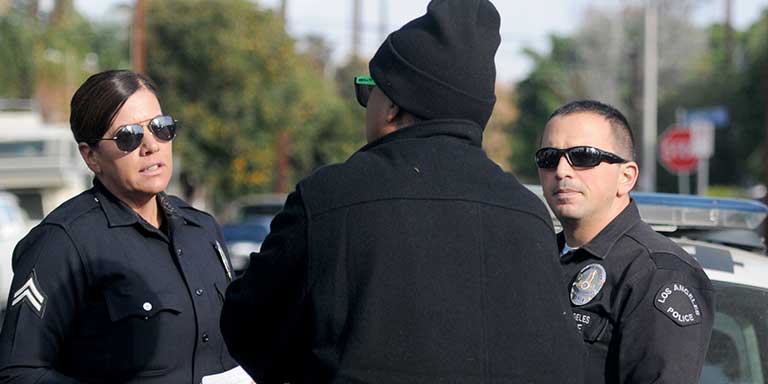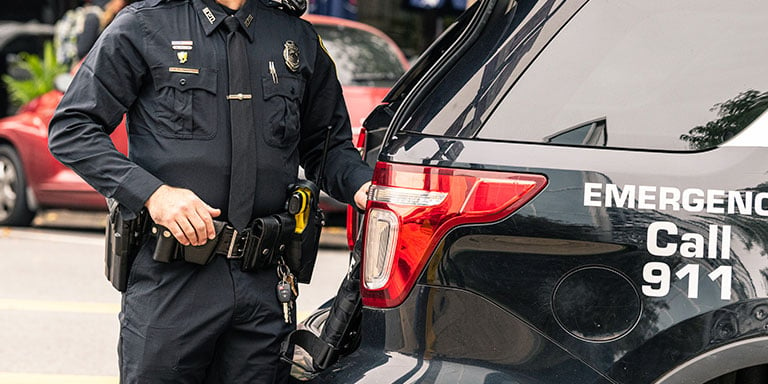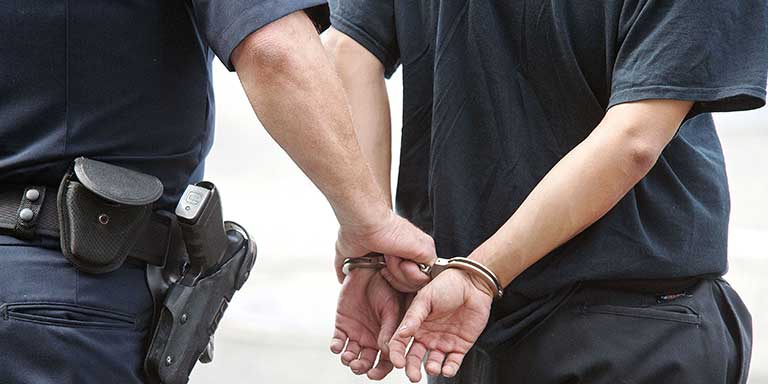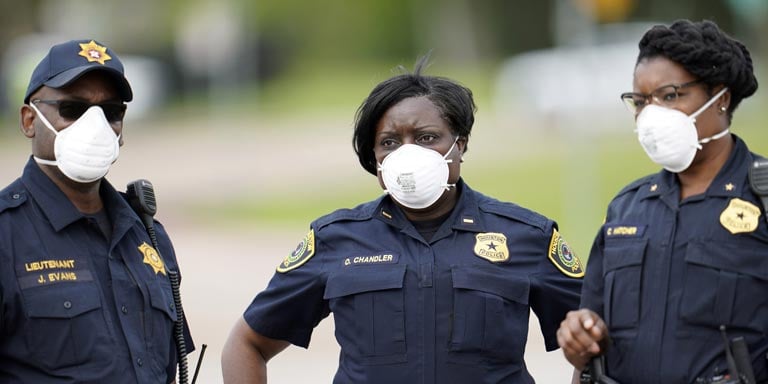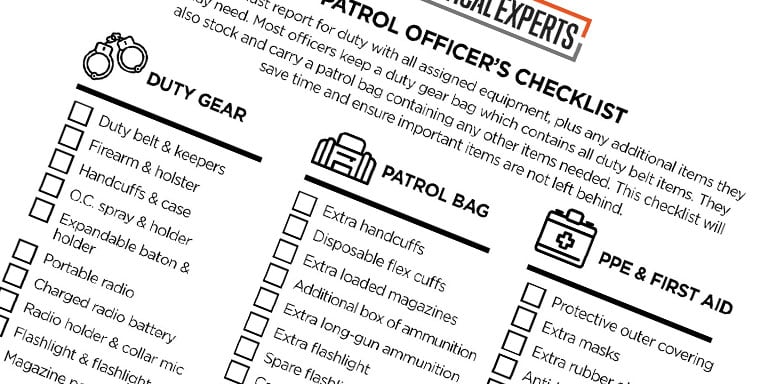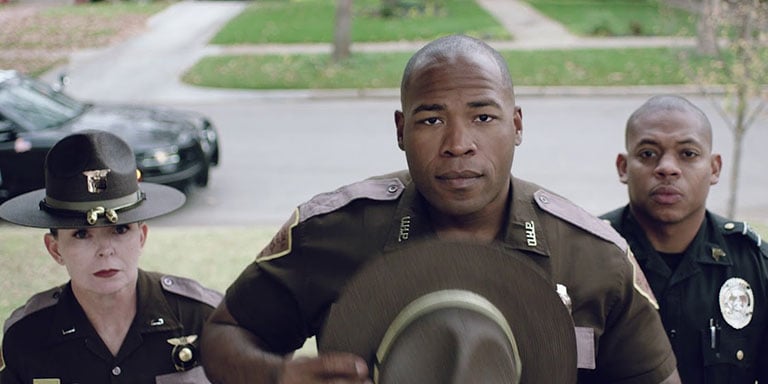Tactical Experts > Public Safety > Law Enforcement
Officer’s Guide to Managing the Scene of a Car Accident
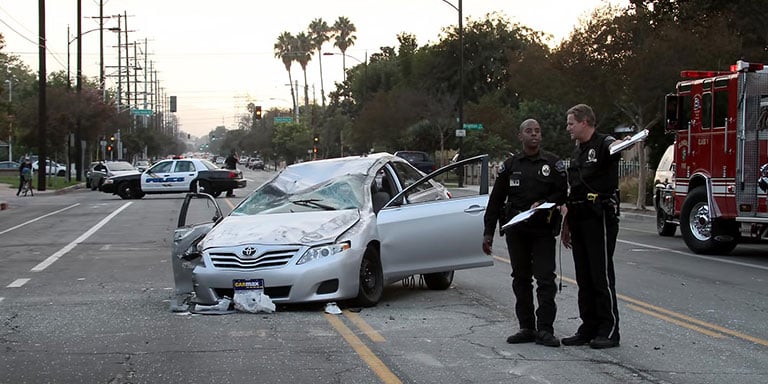
A police officer responding to a crash scene has to complete many tasks quickly and efficiently. The officer must prioritize their actions, addressing the most critical issues first. The initial management of a crash scene should provide protection and assistance to the injured while coordinating the response of essential resources. We cover these procedures and more in this comprehensive guide.
Determining What Help is Needed
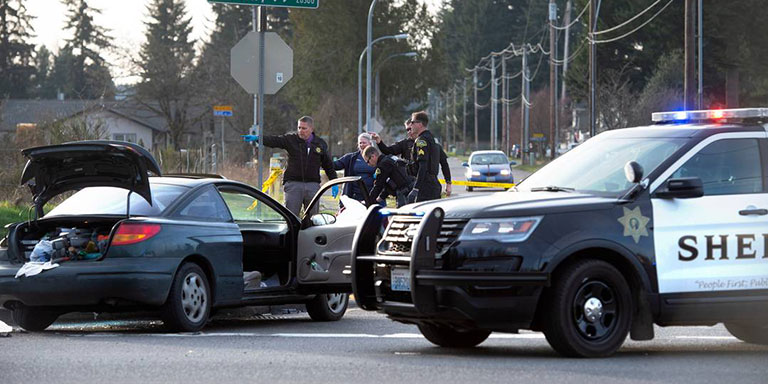
Upon arriving at the scene, the officer must quickly assess the accident and determine how to position their patrol unit to protect the crashed vehicles, rerouting traffic around the affected area. The responding officer should take a quick look at the scene and request additional traffic control units as needed. Once out of the car, they must determine if persons are injured and, if they are, the extent of those injuries. The officer will then call for ambulances, paramedics, fire and rescue personnel as the scene dictates.
Additional police units should handle traffic assignments and detour traffic (read more about this process in our officer's guide to traffic control fundamentals). These units should also be the ones to use flares, cones and barriers to warn and redirect oncoming traffic. One officer should be assigned to look for individuals who witnessed the crash. This is particularly applicable to intersection crashes — witnesses are often operators of a stopped vehicle, or they're in a car behind one of the vehicles involved in the crash. They can be a good source of information regarding what happened and who had the right of way. This officer should record the witnesses' names, contact information and a brief synopsis of their observations.
The officer's initial impression of the extent of any injuries at the scene is also significant. If injuries appear to be life-threatening, the officer may request an expedited response from medical personnel. If medics confirm that injuries are life-threatening, a fatal crash investigation team may be called in to intervene. It's important to note that the condition of the crashed vehicles is often misleading; the driver of a badly mangled vehicle may walk away only slightly injured, while a lesser crash may involve a frail or elderly person who could be more severely hurt.
Moving the Injured
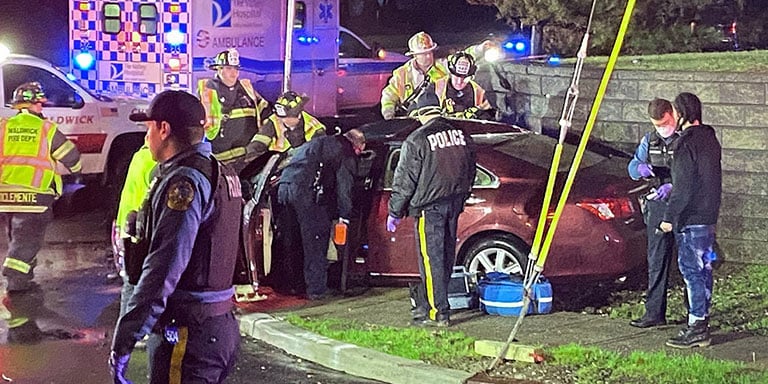
In many motor vehicle accidents, entrapment can be a problem that requires immediate action or no action at all. Vehicle entrapment occurs when one or more persons are unable to exit due to extensive vehicle damage. Depending on the situation and the extent of the injuries, many officers assist the injured by breaking a window or forcing open a car door. The overriding principle here is the protection of human life.
Many car crashes result in varying degrees of spinal injury. Officers responding to the accident should encourage a person seated in a vehicle that is in no further immediate danger to remain there. Medical personnel can conduct an assessment and properly immobilize the spine or other injured areas they identify before moving the patient.
Some situations require the first officer on the scene to act almost immediately before a medical assessment can be completed. The most common example of this is when one or more cars are on fire. If flames are present, and the officer cannot extinguish them, they must remove the injured person from the burning vehicle while trying not to exacerbate their injuries.
Who's in Charge?
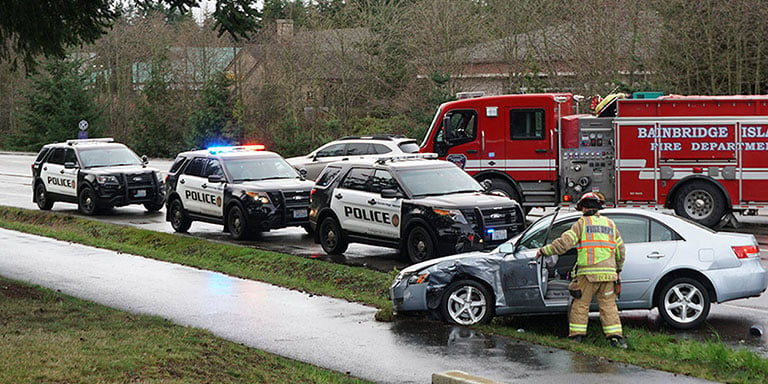
This is a question that needs to be answered and understood by all authorities involved prior to an event that requires different emergency response units. Traffic crash scenes typically feature personnel from the fire department, emergency medical personnel and police officers. In the vast majority of cases, all authorities work well together without conflict. The first priority is always to protect human life, but what happens after the injured are taken care of and removed from the scene?
Consider this case: the fire chief wants a vehicle moved, as it is leaking a flammable liquid and creating a hazard. The crash is serious, and police are investigating it as a potentially fatal crash. The investigators diligently need to take laser-guided, precision measurements from multiple points on the vehicle to reconstruct the crash scene. The easy answer to the "Who's in charge" question is that the police control the scene, but it's not always that simple, and all parties involved must understand lines of authority in advance. Most agencies work under an incident command system, as outlined in the National Incident Management System (NIMS). Many jurisdictions also complete memorandums of understanding, outlining a unified command and drawing clear lines of authority. It's important that everyone understands their role and does what they're supposed to without overstepping their boundaries.
Pedestrian Crash Considerations
Crashes involving pedestrians are some of the most critical crash incidents. The human body does not stand up well against two or three-thousand pound automobiles traveling even at moderate speeds. Authorities should close the roadway until they remove the injured and investigate the scene. Most vehicles stop after striking a pedestrian. However, some drivers panic and flee the scene, which makes the incident a hit-and-run. It is vital to identify the striking vehicle upon arrival to the crash site.
If the vehicle flees the scene, witnesses often describe the car and its direction of travel. Quickly providing this information to other responding units may result in the apprehension of the offending driver and vehicle. It is important to apprehend these drivers quickly, as some of them flee because they have been drinking. Arresting an intoxicated driver can provide strong evidence of the operator's impairment, responsibility and criminal liability for the crash.
Motorcycle Crashes
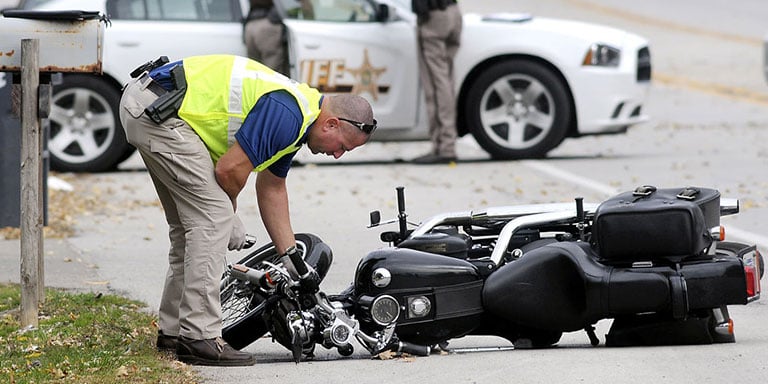
Similar to pedestrian crashes, motorcycle crashes are often critical or fatal incidents. Motorcycles provide very little crash protection to the rider or a passenger. Pedestrians are at least (typically) standing still when struck by a vehicle; conversely, cyclists are traveling at highway speeds then they're hit. Many riders are ejected from the motorcycle and continue through the air or on the ground at a high rate of speed. When approaching a motorcycle crash, the first thing to do is to observe where the motorcycle came to rest. Next, look far beyond it for the victim(s). While some may be more fortunate and skid or roll to an eventual stop, many strike a hard object, such as another car or tree. These victims don't usually survive.
When dispatched to a motorcycle crash, an officer should mentally prepare themselves for a potentially fatal scene. As with pedestrian crashes, the initial investigating officer should dispatch an ambulance. Officials on the scene should cover any fatalities with a sheet as soon as possible to prevent onlookers and photographers from viewing and photographing the deceased.
Tractor-trailer Crashes
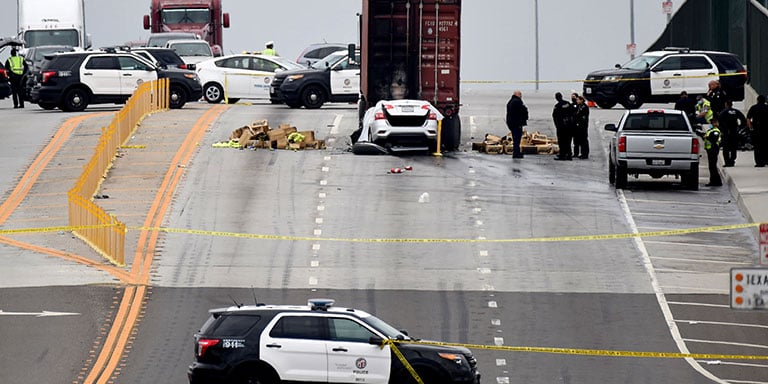
The unique difficulty of a tractor-trailer crash is in the removal of the vehicle from the roadway. A damaged trailer full of thousands of pounds of freight often has to be offloaded onto another empty trailer before it's safe to move. The process can take a significant amount of time and should be coordinated between the investigating officer, the heavy tow truck operator and the company that owns the product onboard the trailer. These crashes often shut down major highways for hours. In some cases, it may be possible for the heavy tow truck operator to move the loaded trailer to the side of the roadway until it can be offloaded.
Tanker Trucks and Hazardous Materials
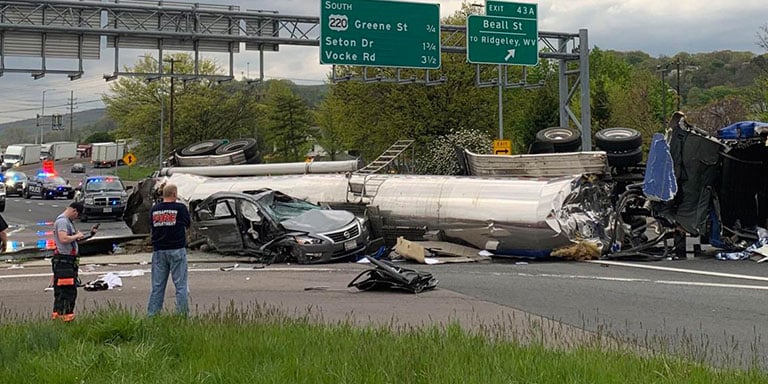
While not all tankers carry hazardous materials, a significant quantity are tasked with moving dangerous chemicals, liquids and gases on both highways and secondary roads. Tanker crashes can be extremely hazardous events, and the chemicals they transport can be fatal to first responders and others in the area unless appropriately handled. Some substances are even fatal simply upon inhalation.
Tanker trailers carrying hazardous materials have a placard displayed on at least four locations on the outside of the vehicle. Officers must use extreme caution in responding to a crash involving a tank trailer. Police arriving at the scene should read the truck's placard from a safe distance and then determine if it is appropriate to approach.
Every police car should have a Department of Transportation hazmat guide in the glove box or the officer's patrol bag (make sure your patrol bag is well packed with our patrol officer's checklist). There are nine groups of placards which officers can easily identify from a safe distance using the guide. The general categories include:
- Class 1: Explosives
- Class 2: Gases
- Class 3: Flammable and combustible liquids
- Class 4: Flammable materials
- Class 5: Oxidizer and organic peroxide
- Class 6: Poisons
- Class 7: Radioactive
- Class 8: Corrosive
- Class 9: Miscellaneous
Each category of hazardous material, from high explosives to deadly poisons, has its own unique set of challenges for first responders. The most commonly carried liquid is gasoline — a modern tanker trailer has a capacity of about nine thousand gallons. Both the liquid and the invisible fumes of a spill may be ignited by any heat source in a broad area. For this reason, entire highways may need to be closed, and large perimeters cleared, until the hazardous spill is contained.
Each trailer's placard also displays a four-digit number. The responding officer should reference the number in the hazmat guide to identify the particular chemical the placard represents. The guide also has instructions regarding steps for a safe response, as well as other dangers specific to the chemical. Additionally, the responding officer may call the hazmat direct line and receive expert advice on the container's contents and how to proceed.
Leaks are another hazard of a tanker accident. Officers should never assume a tanker trailer is not leaking just because they do not observe a leak. Many trailers contain extremely hazardous gases that are difficult to detect from a distance, and officers should be weary.
Every motor vehicle crash is different. Each requires thorough investigation to determine what occurred and who is at fault. Police can complete some crash investigations in a single night, while others take weeks or even months, depending on the crash's complexity and the seriousness of injuries or fatalities.
The initial responding officer's actions during the first few minutes on the scene are paramount. It's vital to get the crash scene under control and to summon the right personnel quickly. Providing aid to the injured and even assisting in the extrication of a trapped individual may also be necessary. The professional police officer will remain calm and focused on the job at hand and not be overwhelmed by the seriousness of the situation or the fatality of a victim. A good officer should protect the crash site from getting worse and assist the victims until additional help arrives.
Did you find this article helpful?


